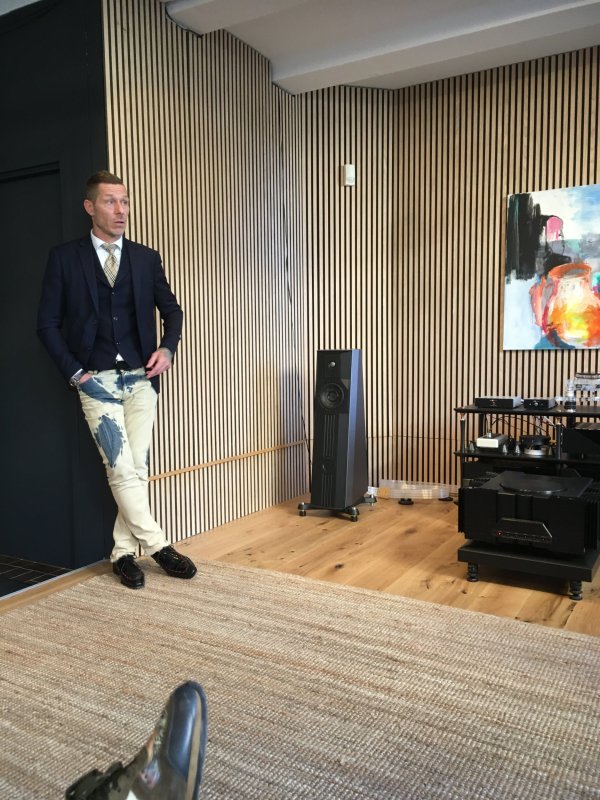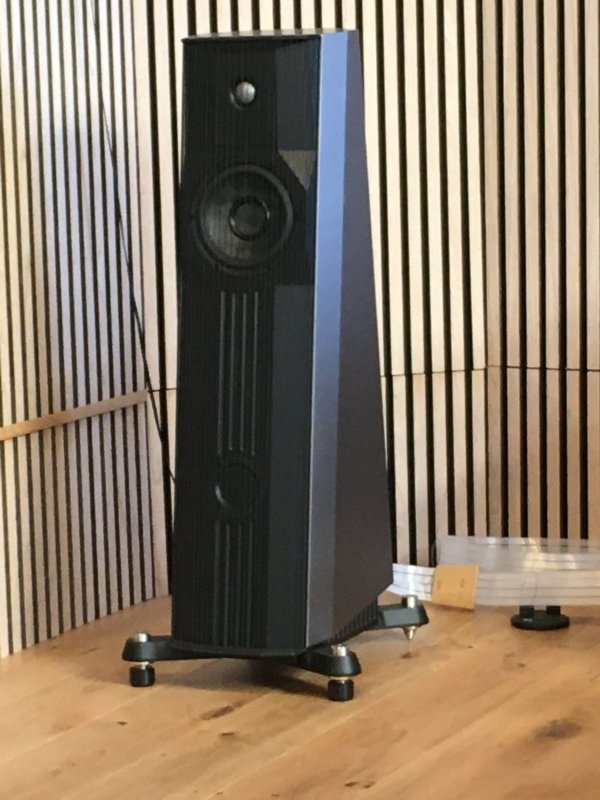One of the most intelligently designed moving coil loudspeakers is made by Gradient in Europe (Denmark). They are expressly designed to take the room out of the sound field, and have several models. I use the Gradient Helsinki's in my bedroom. It works great up agains the back wall. The first time I heard it, my jaw literally dropped on the floor (this is high praise from someone who has owned high end loudspeakers for 40+ years). It received very positive reviews from TAS (Robert Greene) and Stereophile (Art Dudley).
What most speaker designers forget is that the room coloration is the biggest problem in loudspeaker design. You have to tackle that in an intelligent way, and not simply throw more cones in a larger box, as most moving coil loudspeaker designers tend to do. Fortunately, in electrostatic designs, which are what I typically listen to in my listening rooms, there is no lateral radiation, so they tend to be less affected by sidewalls. What Jorma Saalmi of Gradient did was to figure out how to design a cone loudspeaker that simply doesn't "see" the room. It works really well if you position it against the back wall.
There is no closed box cabinet, and the 12" woofer is on an open baffle at right angles to the forward direction. The midrange is housed in its own enclosure that is designed to have no back radiation. The tweeter is horn loaded and both the midrange and tweeter are angled upwards to minimize floor bounce. When you hear a good classical recording made in a concert hall, your room just disappears. It's an eerie sensation. By minimizing the first reflections (floor, side wall, back wall etc.), Jorma achieved a minor miracle.
Some caveats: don't expect thumping boomy bass -- if you crave that, you can always add a big subwoofer. It does not flatter poorly recorded material, and there is no false warmth from the cabinet, like Harbeth and other BBC derived designs. It's relatively small and is intended to sound like a loudspeaker in an anechoic chamber. It's a reminder that in loudspeaker design, as in every other engineering field, there is no substitute for original thinking. As Peter Walker said many decades ago, you design loudspeakers for "documentary reproduction", meaning you are trying to capture what the microphones caught in an actual concert hall. Having just attended a live concert by the Philadelphia orchestra, where peaks exceeded 100 dB even though I was a hundred feet or more away from the musicians, there is no thumping bass. When the bass drum kicks in, it is fast and the transient comes and goes in an instant, without the typical box overhang. That's very hard to reproduce in a typical listening room.
This week, I'm attending three concerts by the Vienna Philharmonic at Berkeley, where I will get a more detailed reminder of what music sounds like in an actual concert hall. That's what Gradient Loudspeakers are designed for. They don't get horn level dynamics, but they can go pretty loud. I tend to listen at lower volumes at home, so it doesn't bother me.
Last piece of advice: I buy loudspeakers only from companies that have a long track record of producing innovative designs. Anyone can throw cones in a box. It takes genius to figure out how to make moving coil loudspeakers sound something like a concert hall. You have to pay attention to room induced coloration, and not just the loudspeaker volume levels.



